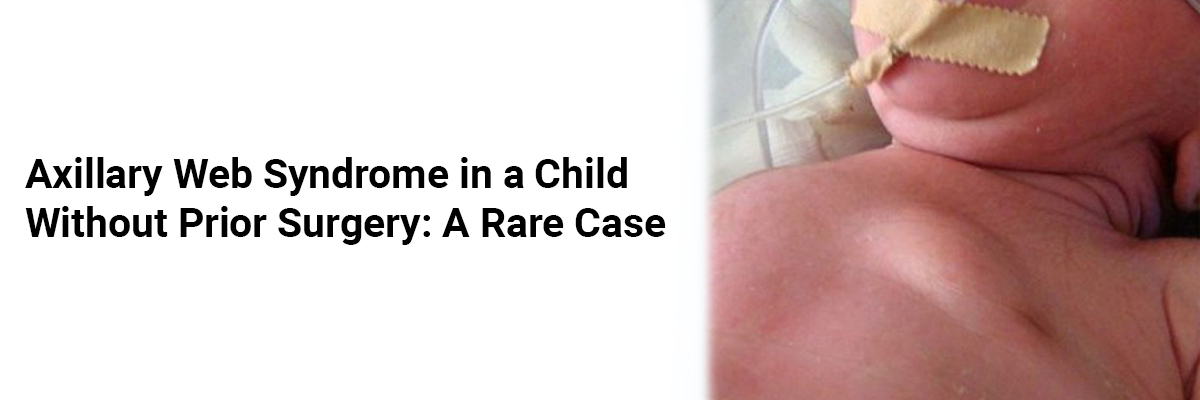
 IJCP Editorial Team
IJCP Editorial Team
Axillary Web Syndrome in a Child Without Prior Surgery: A Rare Case
Axillary web syndrome (AWS), also known as cording lymphedema, is a rare condition characterized by the formation of a fibrotic, cord-like structure in the axilla. This cord likely developed due to inflammation and fibrosis of the lymphatic vessels following disruption of lymphatic flow. No pediatric cases had been previously reported.
A 15-year-old high school athlete with a history of coccidioidomycosis presented with right arm pain and a sensation of a cord under her skin. The symptoms began after a session of overhead weightlifting. She experienced tightness with arm abduction and noted a subcutaneous cord forming from the axilla to the medial aspect of the upper arm. She denied fever, injury, or prior surgery. On examination, a mildly tender subcutaneous cord was felt along the right biceps. Her range of motion was full, and no neurovascular deficits or signs of infection were present.
She was diagnosed with AWS and treated with physical therapy. After three months, her symptoms completely resolved. The cord had reduced in length and was no longer visible on examination.
AWS, though rare in children, should be considered in pediatric patients with axillary symptoms following physical exertion, particularly in sports or resistance training settings.
(Source: Journal of Orthopaedic Reports. 2025;4(1):100385; https://www.sciencedirect.com/science/article/pii/S2773157X24000808)

IJCP Editorial Team
Comprising seasoned professionals and experts from the medical field, the IJCP editorial team is dedicated to delivering timely and accurate content and thriving to provide attention-grabbing information for the readers. What sets them apart are their diverse expertise, spanning academia, research, and clinical practice, and their dedication to upholding the highest standards of quality and integrity. With a wealth of experience and a commitment to excellence, the IJCP editorial team strives to provide valuable perspectives, the latest trends, and in-depth analyses across various medical domains, all in a way that keeps you interested and engaged.




















Please login to comment on this article